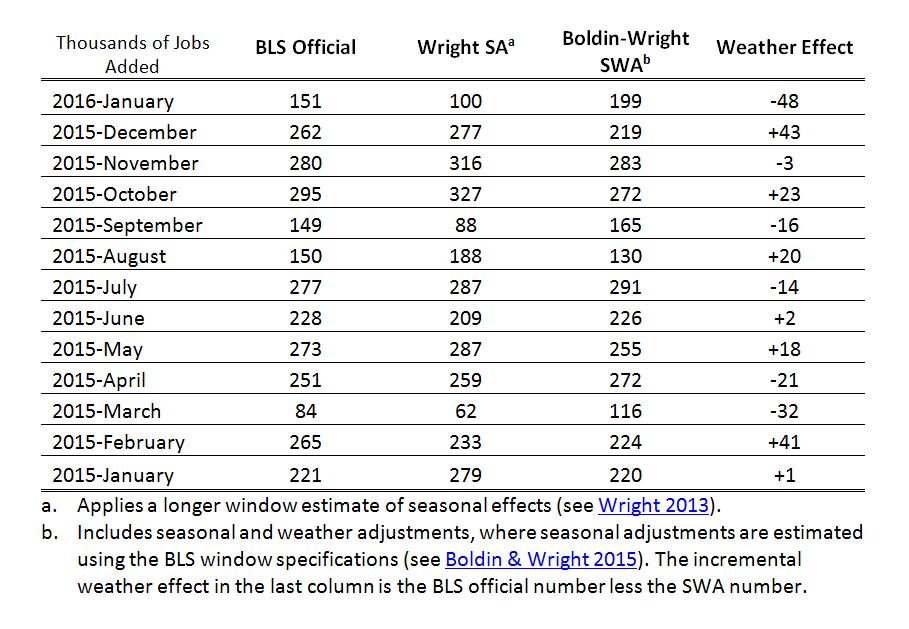Each month, many thousands of workers across the U.S. lose their jobs, while others find themselves newly employed. The net number of jobs created or lost in all this activity is an important indicator of the nation’s economic health. But the raw number of jobs created or lost from one month to the next doesn’t say much about the underlying economy. Rather, many of these month-to-month changes are the result of predictable seasonal fluctuations. For example, the fact that the last ten Januarys witnessed the economy shedding over 2.5 million jobs is simply retailers slowing down after the holidays and says nothing about broader economic performance.
This year’s monthly job gains and losses can indicate how the economy is doing once they are corrected to account for the pattern we already expect in a process called seasonal adjustment. The approach for this seasonal adjustment that is presently used by the Bureau of Labor Statistics (BLS) puts very heavy weight on the current and last two years of data in assessing what are the typical patterns for each month.
In my paper “
Unseasonal Seasonals?
” I argue that a longer window should be used to estimate seasonal effects. I found that using a different seasonal filter, known as the 3×9 filter, produces better results and more accurate forecasts by emphasizing more years of data. The 3×9 filter spreads weight over the most recent six years in estimating seasonal patterns, which makes them more stable over time than in the current BLS seasonal adjustment method.
I calculate the month-over-month change in total nonfarm payrolls, seasonally adjusted by the 3×9 filter, for the most recent month. The corresponding data as published by the BLS are shown for comparison purposes. According to the alternative seasonal adjustment, the economy gained only 100,000 new jobs last month, compared to the official BLS total of 151,000. Data updates released Friday for prior months also reveal some differences between my figure and the official job gains numbers from prior months, though these discrepancies can for the most part be attributed to the BLS’s updated seasonal adjustment procedure, which I describe in my
previous post
.
In addition to seasonal effects, abnormal weather can also affect month-to-month fluctuations in job growth. In my paper “
Weather Adjusting Economic Data
” I and my coauthor Michael Boldin implement a statistical methodology for adjusting employment data for the effects of deviations in weather from seasonal norms. This is distinct from seasonal adjustment, which only controls for the normal variation in weather across the year. We use several indicators of weather, including temperature and snowfall.
For the month of January, our weather-adjusted estimate of 199,000 new jobs factors out the effects of unusual weather, which we estimate were roughly 48,000 new jobs. As mentioned in my
previous post
, this estimate is not affected by the unusually large snowstorm that hit the Northeast on January 21-23, since the
BLS defines a person as being employed if he or she works at any stage in the pay-period bracketing the 12th of the month. The effect of the weather estimated today is larger than what I estimated initially in my
previous post
, 48,000 jobs compared to 25,000.




Commentary
Alternative seasonal and weather adjustments may shed some light on mixed January jobs report
February 8, 2016